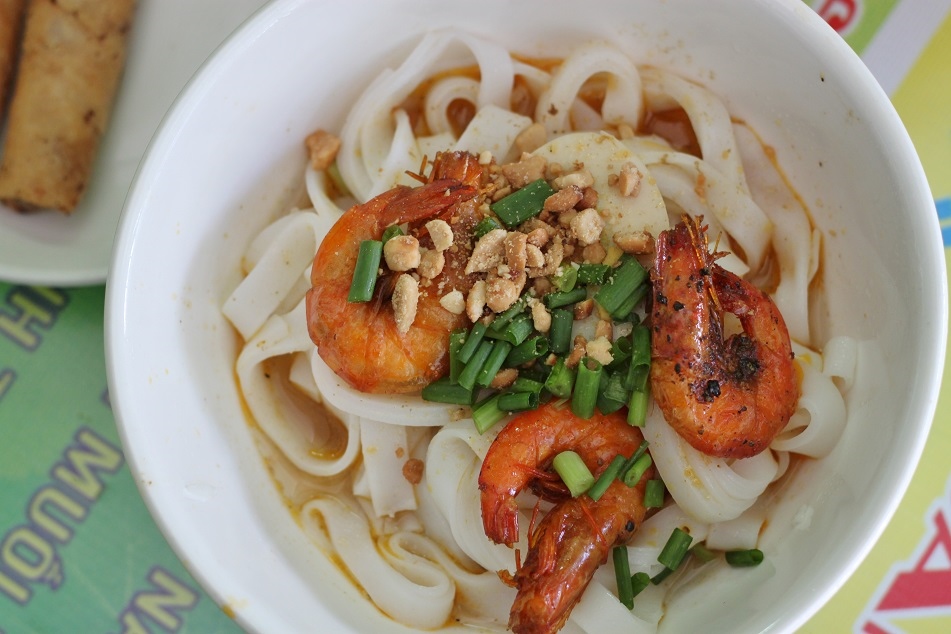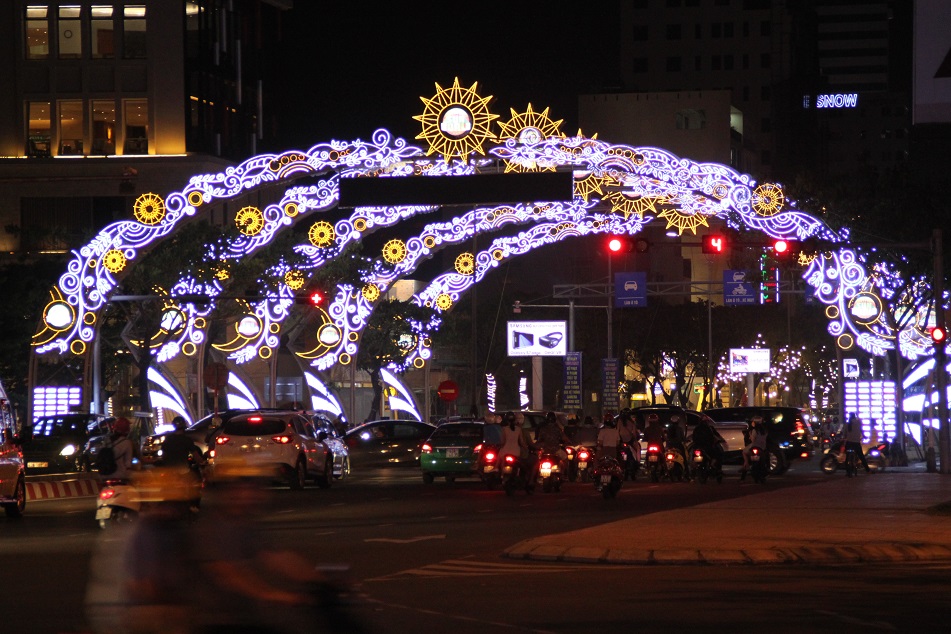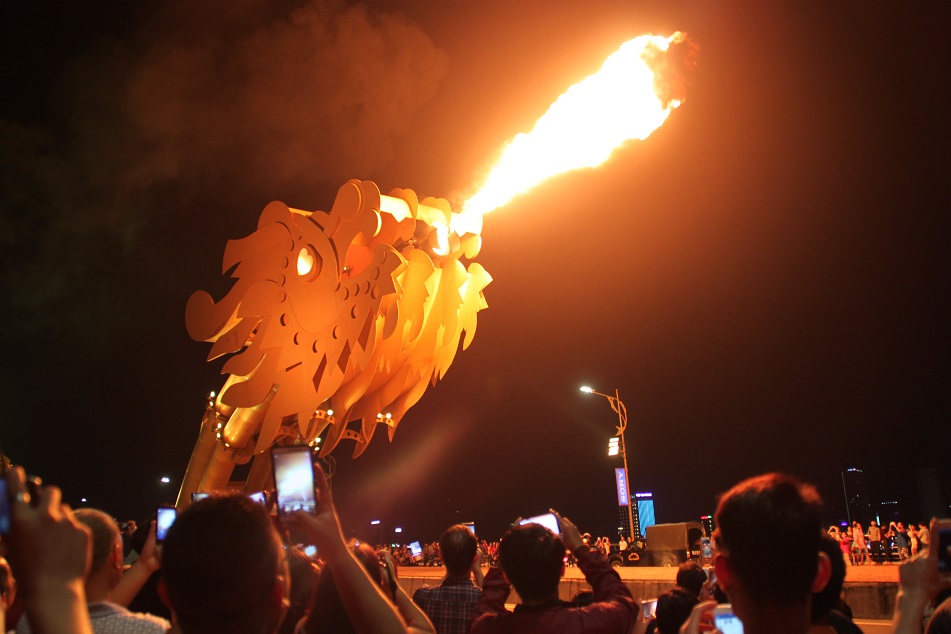A Vietnamese restaurant located in a once-lively mall in a gentrified neighborhood of Jakarta has for years become my choice whenever I crave food from the Southeast Asian country. It was where my parents tried their first pho several years ago (which my father, unsurprisingly, didn’t like), also where I met the previous tenant of my current apartment, and now it’s where James usually tags along whenever we’re in the mood to have mi bo kho (Vietnamese-style beef stew with noodles), bun bo nuong xa (rice noodle salad served with lemongrass-infused skewered beef), or just goi cuon (Vietnamese spring rolls). Last year, we were looking very intently at every single photo inside the restaurant – images of Vietnam’s most beautiful landscapes, temples, and French colonial buildings. Each of them seemed to call us to return to the country – both of us had been to southern Vietnam, James in 2013 and I two years earlier. Serendipitous circumstances early this year – including a canceled trip to Jordan – and the constant thought of going back to Vietnam eventually secured our second visit to the country back in April.
Home to three of eight UNESCO World Heritage sites in the country, central Vietnam unsurprisingly came on top of our list. James, always interested in seeing old trading ports in the region, eyed the historic town of Hoi An. Meanwhile, as a person who is always fascinated by ancient temples, My Son compound – a vestige of a once-powerful kingdom called Champa – had intrigued me for many years. Da Nang (also spelled Danang) – Vietnam’s third biggest city – is conveniently located within 100 km from the three UNESCO-listed sites: Hoi An, My Son, and the former capital of Imperial Vietnam in Hue. Thanks to the city’s relatively easy accessibility from Jakarta (with connecting flights via Singapore or Kuala Lumpur), a few weeks after the decision was made we were already on our way to Da Nang, at a time which coincided with the Vietnamese summer.
En route to Vietnam, we made a brief stopover in Singapore, from which a number of families boarded the flight for it was the beginning of the Easter holidays. In recent years, Da Nang has been developing a reputation as a family holiday destination, and this couldn’t have been more evident at the city’s main beach where family-friendly international hotels and resort chains operate. The availability of world-class accommodation as well as Da Nang’s contribution to Vietnam’s economic growth were a few reasons for the government to host this year’s APEC summit – a prestigious annual gathering of 21 heads of economies in the Pacific Rim – in the city.
At the airport in Da Nang, the immigration lines moved at a snail’s pace, and it took even longer for James to get a visa on arrival. After a good several minutes in the line, I finally arrived at the immigration counter, manned by a guy – probably around my age – who was definitely not among the friendliest immigration officers I had ever encountered. He flipped through all of my passport pages, but no questions were asked. And for some mysterious reason, he decided to stamp on the penultimate page of my passport, leaving the previous two dozens pages empty. Fortunately getting a taxi was a faster, easier, and more straightforward experience, and a few minutes after we left the airport we were already in downtown Da Nang.
As our taxi made the final turn to the street where our hotel was, colorful lights flickered all over the city, from bridges to street arches. To our right, a wide promenade was buzzing with activities as locals and foreigners seemed to enjoy the city’s festive nighttime ambiance. From the window of our room, a gleaming yellow dragon straddled the Han River, bridging Da Nang’s western neighborhoods and the eastern part of the city, as if suggesting the shift from the West to the East in the global economy.

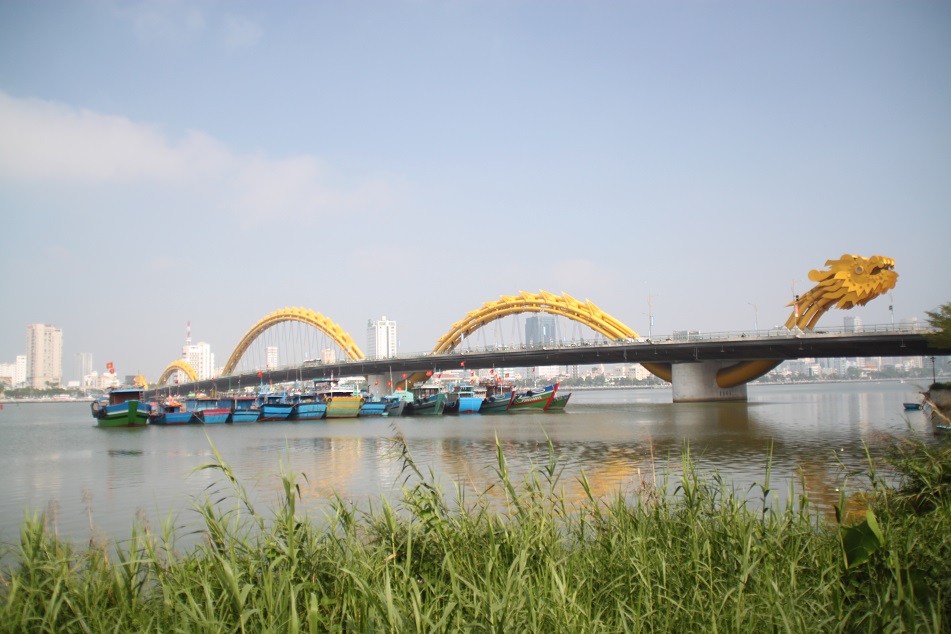

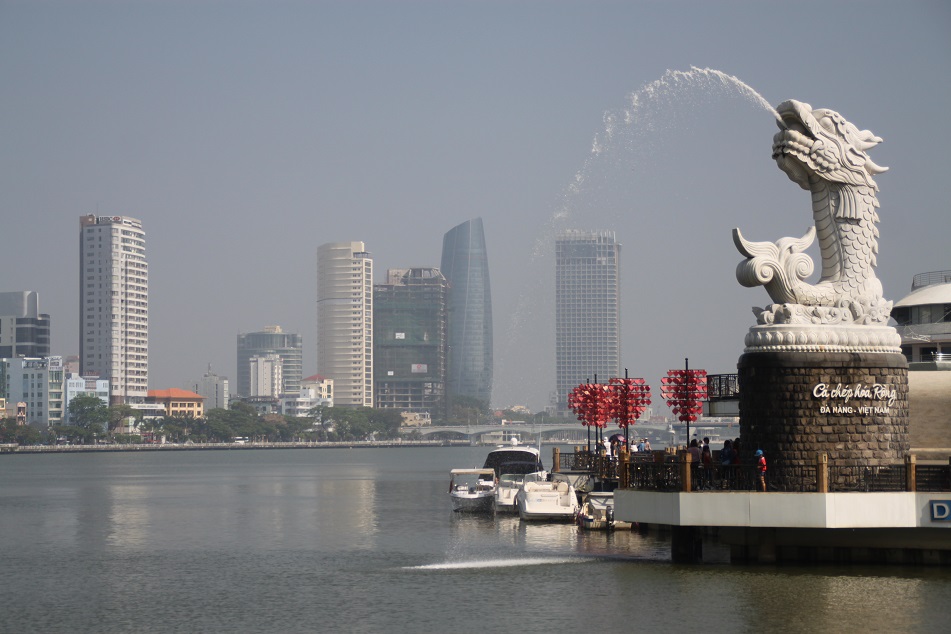
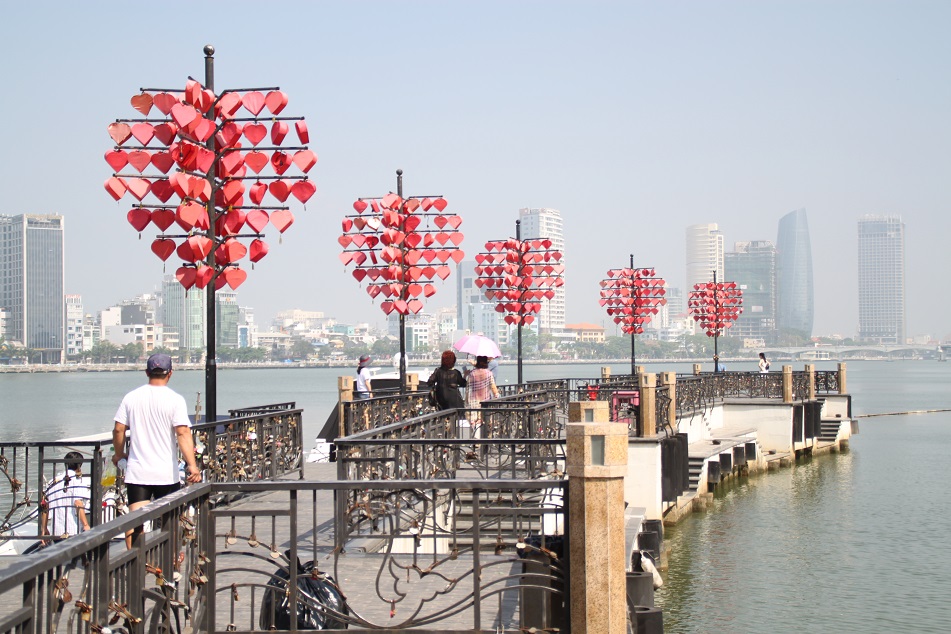
The following morning, after a very satisfying breakfast with a sweeping view of the Han River, we began a full day’s exploration of Da Nang. Less than five minutes walk from our hotel was the charming Da Nang Cathedral, built in the early 20th century when Vietnam was still controlled by the French. Not only did the neo-Gothic structure’s brilliant pink facade catch our attention, but it also drew big groups of Chinese tourists who came a few minutes after we started taking photos of the cathedral. However, as expected they didn’t linger for too long. Several selfies and group photos later, and after a brief explanation by a tour guide of what they were seeing, off they went to the next stop on what was likely a long list of places to visit by day’s end.
It was not even 10, but the heat was already quite intense. We walked toward the same yellow dragon that we had seen the night before from the hotel, an impressive 666-meter-long tied-arch bridge whose three arches were designed to look like the body of a dragon – with a head and a tail added at its ends. Opened in 2013, the bridge has now become one of Da Nang’s most iconic landmarks. As we reached the eastern bank of the river, another dragon emerged. This time, however, with the body of a mermaid. It was not hard to see where the sculptor’s inspiration came from; since its inception in the early 1970s, Singapore’s Merlion has been featured in the city’s tourism campaigns which resulted in its popularity among tourists. The “Merdragon”, the nickname which James and I quickly gave to this new landmark of Da Nang, spewed water from its mouth in the same fashion as the Merlion. Next to it was Love Pier, festooned with heart-shaped lanterns and where old love songs drifted through the air.
We walked back to the western bank of the Han River to visit the Museum of Cham Sculpture. Not only was it the place I was looking forward to visiting the most in Da Nang (blame my penchant for ancient temples, statues and sculptures!), but it also provided a much-needed respite from the scorching Vietnamese sun. The early 20th-century museum housed a vast collection of Cham artifacts, as well as fragments of temples which were salvaged from the war. On the way out, beautiful images of Vietnam were on display along the exit path. We sat on a bench under some leafy trees as a gentle breeze slowly wiped away the sweat from our faces. However, as it was already past lunch time, off we went to a local no-frills restaurant called Ba Vi where we had a local noodles dish called mi Quang. Mine came with prawns, crushed peanuts and chopped scallions, served with spring rolls, fresh vegetables, and a crispy rice cracker. Nothing beats the bold flavors of dishes served in such local joints.
At midday, the city’s wide and clean riverfront promenade was conspicuously empty, for obvious reasons. But after sunset, it became a sort of extended living room, where the locals performed group dances and aerobic sessions as curious foreigners passed by and watched in amusement. On weekend nights at 9pm, the yellow dragon comes to life, exactly the reason for James and I to return to the far end of the bridge despite the relatively long walk from our hotel. Ten minutes before nine o’clock, more and more people surrounded the beast’s head whose heart-shaped eyes glowed brightly. Five minutes later, policemen closed the road to traffic, and even more people now flocked to the eastern end of the bridge. At nine sharp, the dragon came to life and spewed bursts of fire into the air with such force that we felt the heat on our faces. Then the dragon’s head turned blue as it gushed out a jet of water, leaving a thin, mist-like curtain of droplets blowing in our direction. Whether the dragon really symbolized the West-East metaphor or not, that night it became the friendly face of Da Nang and showed visitors that refreshing moments will always follow intense heat, just like the city itself.

